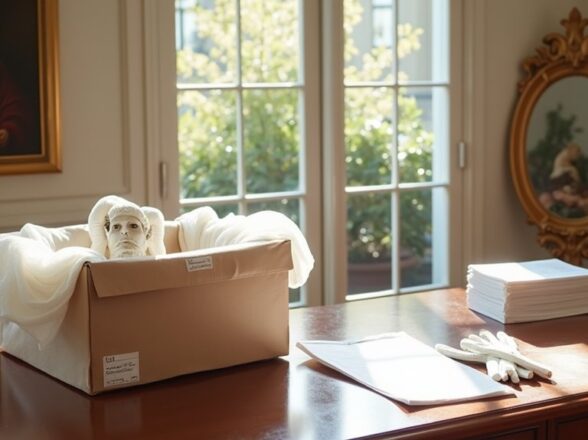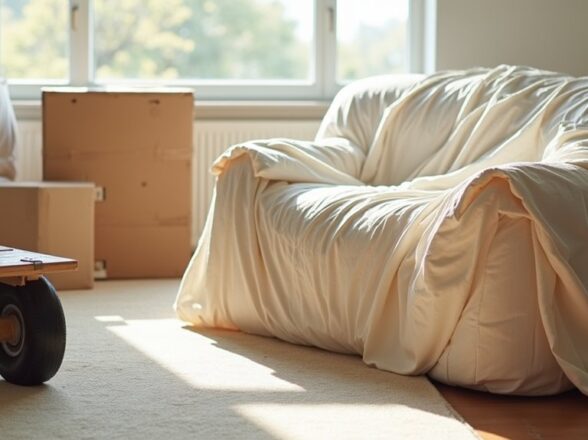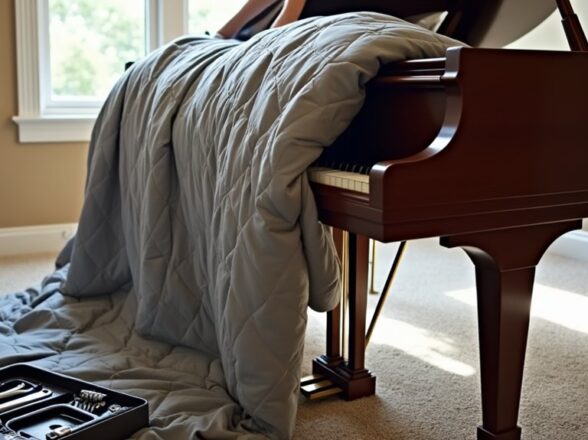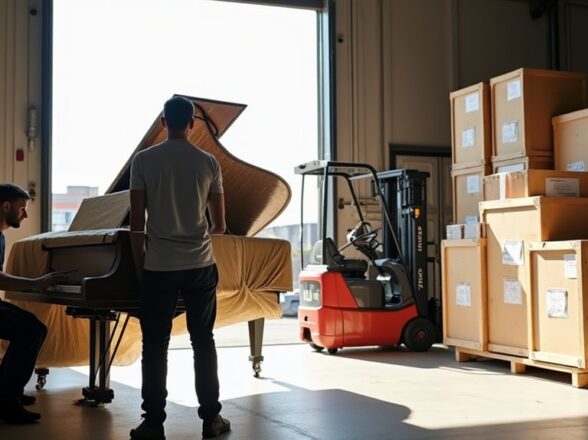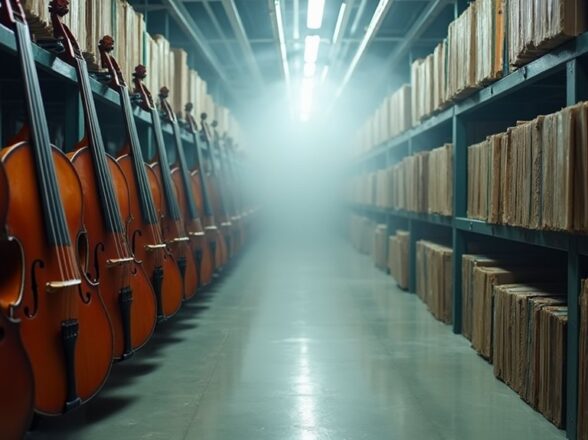How Often Should You Inspect Art and Antiques After Moving? Tips for Preventing Long-Term Damage
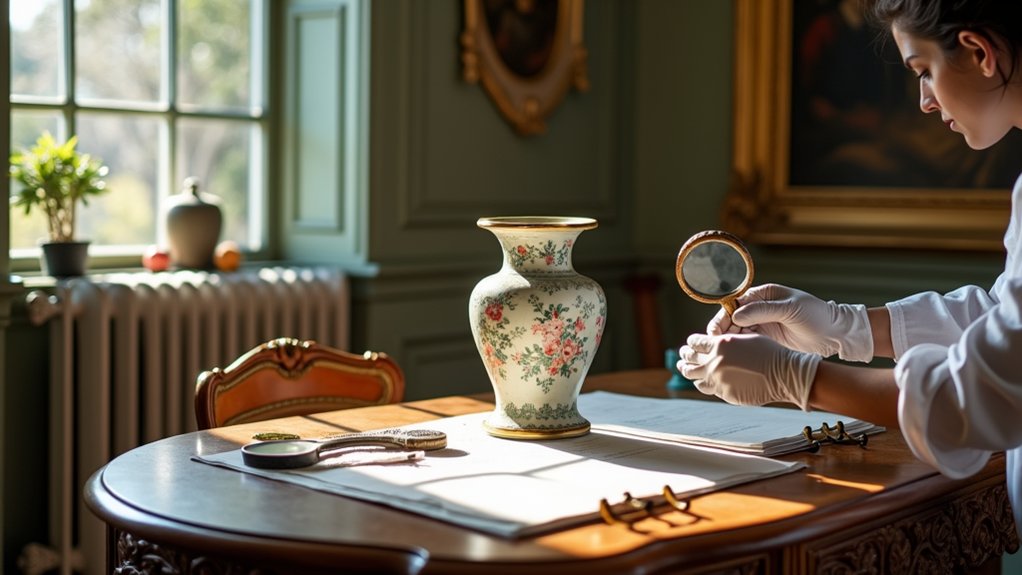
You should inspect your art and antiques immediately after moving and at least twice a year afterward. These inspections help identify transport damage and prevent long-term issues. Look for surface cracks, color fading, or other signs of wear. Maintaining stable temperature and humidity is critical, ideally between 65°F and 75°F and 40-50% humidity. Make sure items are not exposed to direct sunlight. Documenting the condition through photos and logs can help track changes. Regular checks and proper care keep your pieces in good shape. There's more to reflect on for ideal preservation, so keep exploring your maintenance options.
Importance of Regular Inspections

While you might think your art and antiques are safe once they're settled in, regular inspections are essential for preserving their condition. Conducting checks every six months helps you spot signs of damage early, especially from environmental factors like humidity fluctuations. After moving, inspect items immediately to identify any transport-related damage so you can address it with professionals. Documenting the condition of each piece during these inspections is important for monitoring changes over time and is critical for insurance claims if necessary. Routine assessments allow for timely maintenance and conservation efforts, ensuring the longevity and value retention of your valuable collectibles. Regular inspections not only protect your investment but also enhance your enjoyment of these cherished items. If needed, consider using climate-controlled storage facilities to protect sensitive items from environmental damage.
Recommended Inspection Frequency
Regularly inspecting your art and antiques is essential for maintaining their condition and value. Aim to inspect your items at least once every six months. Conduct thorough inspections immediately after moving to check for any transport-related damage. It's also wise to monitor items displayed in high-traffic areas or near windows for excessive light exposure. When seasons change, inspect your valuables to assess humidity fluctuations that could cause damage. For particularly valuable or fragile items, consider scheduling professional evaluations annually. These evaluations help guarantee proper care and maintenance. By following this inspection frequency, you can identify potential issues early, preventing long-term damage and maintaining the integrity of your cherished pieces. Consider using facilities with climate-controlled storage units to prevent damage from mold and degradation, ensuring your valuables are preserved in the best conditions.
Signs of Potential Damage
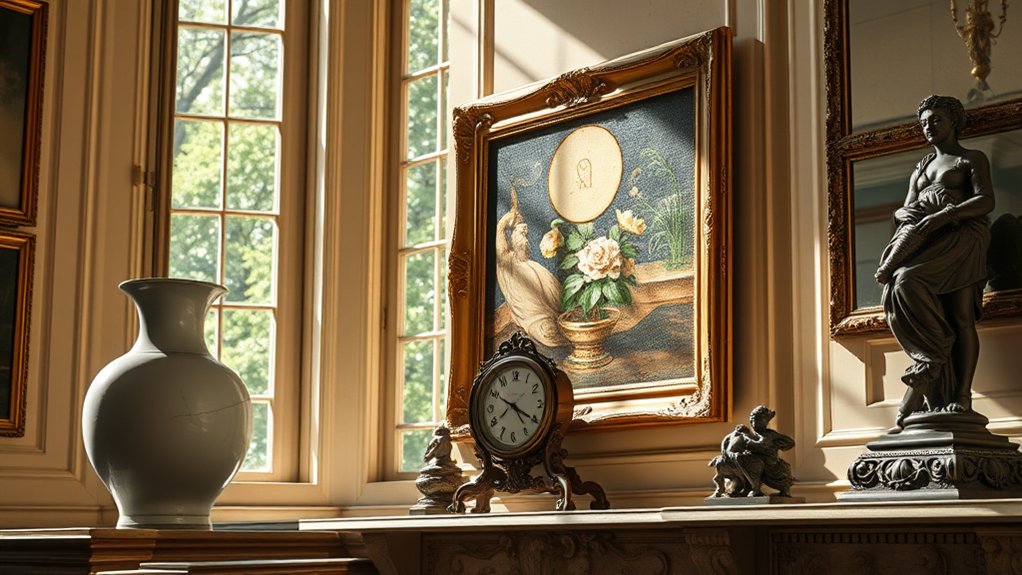
When inspecting your art and antiques, start by checking for visible surface cracks and color fading. These signs can indicate exposure to sunlight or environmental changes that may have compromised your pieces. Addressing these issues early can help prevent further damage and preserve your valuable items. Consider utilizing secure storage options to protect your art and antiques from environmental factors and ensure their longevity.
Visible Surface Cracks
Visible surface cracks can be more than just superficial blemishes; they often signal potential underlying damage to your art and antiques. These cracks may indicate structural damage caused by temperature fluctuations or improper handling during transport. Regular inspection for visible surface cracks is vital, ideally every six months, to guarantee early detection of issues. Humidity and direct sunlight can worsen cracks over time, so it's important to maintain a stable environment for your items. The presence of cracks can diminish the overall value and aesthetic appeal of your antiques. If you notice any cracks, consult a professional conservator. They can assess the damage and recommend appropriate restoration techniques to preserve the integrity of your valuable items. Choosing specialty moving services can prevent potential damage during transport by ensuring expert handling of your art and antiques.
Color Fading Indicators
While inspecting your art and antiques for visible surface cracks, don't overlook the signs of color fading. This fading can indicate exposure to direct sunlight, which degrades pigments and materials over time, leading to irreversible damage. Look for signs of discoloration or uneven color patches, as these may signal vulnerability due to environmental factors like humidity and temperature fluctuations. Maintaining stable conditions is essential to preserving vibrancy. Using UV-protective glass for framing can greatly reduce color fading. If you notice fading, consult a professional conservator who can recommend restoration techniques to restore original hues.
| Indicators | Actions |
|---|---|
| Color fading | Use UV-protective glass |
| Discoloration | Maintain stable temperature |
| Uneven patches | Consult a professional conservator |
Ideal Storage Conditions
To properly store your art and antiques, you need to control the temperature and humidity. Aim for a temperature between 65°F and 75°F and keep humidity levels around 40-50% to prevent damage. Additionally, protect your items from UV light by avoiding direct sunlight or using UV-filtering glass.
Temperature and Humidity Control
Maintaining the right temperature and humidity levels is essential for preserving your art and antiques. Ideally, you'll want a climate-controlled environment with:
- Temperature between 65°F and 75°F (18°C to 24°C)
- Humidity levels between 40% and 60%
- Regular monitoring of temperature using hygrometers
- Periodic inspection of art and antiques every six months
- Avoidance of sudden changes in temperature or humidity
These factors help prevent damage like cracks and warping. By keeping conditions ideal, you can protect your valuable items from deterioration. Remember, environmental factors play a significant role in your art's longevity. Taking the time to monitor temperature and humidity will be vital in preventing long-term damage.
UV Light Protection
UV light poses a significant threat to your art and antiques, causing fading and deterioration over time. To protect your items, avoid direct sunlight exposure. Use UV-filtering glass or acrylic when framing artwork, as this can block up to 99% of harmful UV rays. Storing antiques in a controlled environment is essential. Consider using curtains or UV-blocking window films to limit UV light exposure. Regularly inspect and rotate your art pieces to prevent uneven fading from prolonged exposure. Maintaining stable temperature and humidity levels, ideally around 70°F and 40-50% relative humidity, is vital for preservation. By combining these strategies, you can effectively protect your valuable items from the damaging effects of UV light.
Preventive Maintenance Tips

Inspecting your art and antiques after moving is essential for preserving their condition. Regular preventive maintenance can help you avoid long-term damage. Here are some tips to follow: Inspecting your art and antiques after moving is essential for preserving their condition. Here are some tips to follow: Make sure to assess each piece for any signs of wear, such as cracks or fading colors, and consider investing in specialized storage solutions. Utilizing fine art moving services can also ensure that your valuable items are transported safely, minimizing the risk of physical harm during relocation. Additionally, keep a detailed inventory of your collection, noting any necessary repairs or conservation needs. It’s also important to educate yourself on how to move art and antiques properly to avoid potential damage during transportation. Consider consulting with professionals who specialize in art handling, as they can provide valuable insights and techniques for ensuring your items remain in pristine condition. Remember, the effort you invest in safeguarding your collection will pay off in the long run, preserving both its value and your enjoyment.
- Conduct a thorough inspection immediately after moving to spot cracks or warping.
- Schedule maintenance checks at least twice a year to assess overall condition.
- Keep items away from direct sunlight and extreme temperature changes.
- Use climate control to maintain stable humidity (45-55%) and temperature (65-70°F).
- Document any maintenance or restoration work for future reference and insurance.
Following these steps guarantees you effectively preserve your prized possessions. By staying proactive, you can maintain the quality and integrity of your art and antiques for years to come.
Handling Items With Care
After taking the time to inspect your art and antiques post-move, it's important to handle them with care to secure their longevity. Always use clean, dry hands or cotton gloves when touching fragile items to prevent oils from damaging surfaces. When moving or adjusting pieces, support the weight from the bottom to avoid stress on the frame. Use both hands for stability and avoid dragging pieces to minimize scratches. Make sure straps or protective materials don't touch the item's surface to prevent abrasion. Store your cherished items upright in a climate-controlled environment. Avoid stacking or placing heavy objects on top, as this can lead to deformation. With careful handling, you can protect your investment and enjoy it for years.
Professional Conservation Services
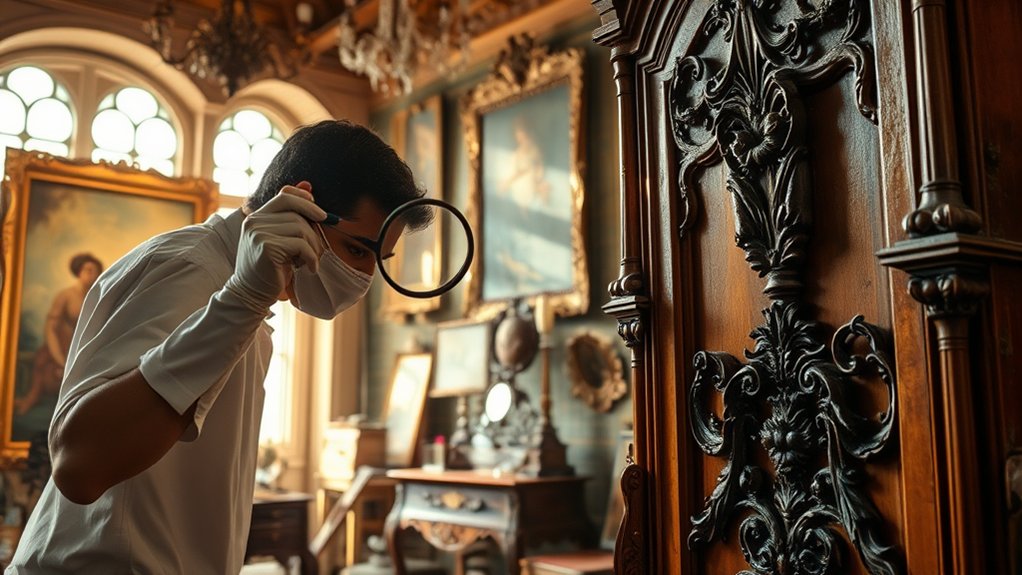
While you may take great care in handling your art and antiques, engaging professional conservation services is essential for their long-term preservation. Trained conservators use specialized techniques to guarantee your items remain intact. These services often include:
- Cleaning to remove dirt and grime
- Restoration practices to repair physical damage
- Stabilization against environmental factors
- Regular assessments to identify potential threats
- Proactive measures to prevent deterioration
Documenting Condition Changes
As you settle into your new space, it's important to document any condition changes in your art and antiques promptly. Start with thorough inspections right after moving and continue to assess their condition every six months. Take detailed photographs from multiple angles to capture existing imperfections and any new damage. Keep a written log alongside these photos, noting inspection dates, condition changes, and any repairs or maintenance performed. A condition report template helps standardize assessments, ensuring consistency over time. Store all documentation securely, as it's crucial for insurance claims and future value assessments. By diligently documenting condition changes, you can protect your investments and maintain their integrity for years to come.
Frequently Asked Questions
What Tools Are Best for Inspecting Art and Antiques?
To inspect art and antiques effectively, you'll need tools like magnifying glasses, UV lights, and moisture meters. Use condition report templates and follow inspection frequency guidelines for best results in art preservation techniques and antique appraisal methods.
Can I Use Regular Cleaning Products on My Antiques?
You might think regular cleaning products are fine, but they can harm vintage finishes. Instead, use eco-friendly options or recommended products designed for specific surface types. Always seek professional advice for proper care and protective coatings.
How Do I Handle Fragile Items During Inspections?
When inspecting fragile items, use protective gear and follow safe transport methods. Assess environmental conditions, employ proper inspection techniques, and implement damage prevention strategies like surface cleaning and effective storage solutions to minimize risks and explore repair options.
Should I Wear Gloves When Inspecting My Art?
Think of your art as fragile blossoms in a garden; wearing gloves during inspection protects their beauty. Use suitable glove materials to prevent oils, ensuring careful handling, damage assessment, and effective cleaning methods for art preservation.
What Should I Do if I Discover Damage?
If you discover damage, start with a damage assessment. Document everything for insurance claims, explore restoration options, and consult expert evaluations. Consider preservation techniques and repair services while ensuring ideal storage conditions to prevent further issues.
Conclusion
In conclusion, safeguarding your art and antiques is essential. Schedule regular inspections to spot signs of stress or strain. Store items in suitable conditions to maintain their charm. Handle each piece with care to prevent further damage. Consider professional conservation services for significant concerns. Document any changes in condition to track their journey. By following these straightforward steps, you can guarantee your valuable treasures remain in top shape for years to come.
Related posts
Recent posts
Post Categories
Tags
Subscribe


